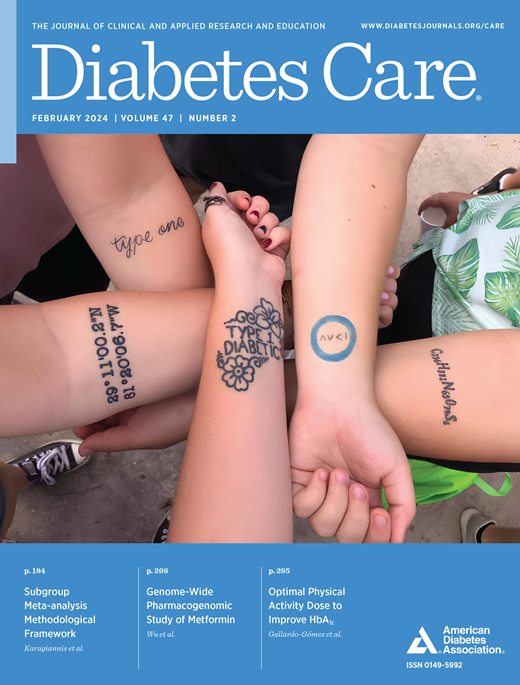2型糖尿病高危人群减肥手术的亚表型依赖性获益
IF 16.6
1区 医学
Q1 ENDOCRINOLOGY & METABOLISM
引用次数: 0
摘要
目的:减肥手术是肥胖和2型糖尿病(T2D)患者的有效治疗选择。然而,T2D和/或合并症风险个体亚型(t本文章由计算机程序翻译,如有差异,请以英文原文为准。
Subphenotype-Dependent Benefits of Bariatric Surgery for Individuals at Risk for Type 2 Diabetes
OBJECTIVE Bariatric surgery is an effective treatment option for individuals with obesity and type 2 diabetes (T2D). However, whether outcomes in subtypes of individuals at risk for T2D and/or comorbidities (Tübingen Clusters) differ, is unknown. Of these, cluster 5 (C5) and cluster 6 (C6) are high-risk clusters for developing T2D and/or comorbidities, while cluster 4 (C4) is a low-risk cluster. We investigated bariatric surgery outcomes, hypothesizing that high-risk clusters benefit most due to great potential for metabolic improvement. RESEARCH DESIGN AND METHODS We allocated participants without T2D but at risk for T2D, defined by elevated BMI, to the Tübingen Clusters. Participants had normal glucose regulation or prediabetes according to American Diabetes Association criteria. Two cohorts underwent bariatric surgery: a discovery (Lille, France) and a replication cohort (Rome, Italy). A control cohort (Tübingen, Germany) received behavioral modification counseling. Main outcomes included alteration of glucose regulation parameters and prediabetes remission. RESULTS In the discovery cohort, 15.0% of participants (n = 121) were allocated to C4, 22.3% (n = 180) to C5, and 62.4% (n = 503) to C6. Relative body weight loss was similar among all clusters; however, reduction of insulin resistance and improvement of β-cell function were strongest in C5. Prediabetes remission rate was lowest in low-risk C4 and highest in high-risk C5. Individuals from high-risk clusters changed to low-risk clusters in both bariatric surgery cohorts but not in the control cohort. CONCLUSIONS Participants in C5 had the highest benefit from bariatric surgery in terms of improvement in insulin resistance, β-cell function, and prediabetes remission. This novel classification might help identify individuals who will benefit specifically from bariatric surgery.
求助全文
通过发布文献求助,成功后即可免费获取论文全文。
去求助
来源期刊

Diabetes Care
医学-内分泌学与代谢
CiteScore
27.80
自引率
4.90%
发文量
449
审稿时长
1 months
期刊介绍:
The journal's overarching mission can be captured by the simple word "Care," reflecting its commitment to enhancing patient well-being. Diabetes Care aims to support better patient care by addressing the comprehensive needs of healthcare professionals dedicated to managing diabetes.
Diabetes Care serves as a valuable resource for healthcare practitioners, aiming to advance knowledge, foster research, and improve diabetes management. The journal publishes original research across various categories, including Clinical Care, Education, Nutrition, Psychosocial Research, Epidemiology, Health Services Research, Emerging Treatments and Technologies, Pathophysiology, Complications, and Cardiovascular and Metabolic Risk. Additionally, Diabetes Care features ADA statements, consensus reports, review articles, letters to the editor, and health/medical news, appealing to a diverse audience of physicians, researchers, psychologists, educators, and other healthcare professionals.
 求助内容:
求助内容: 应助结果提醒方式:
应助结果提醒方式:


